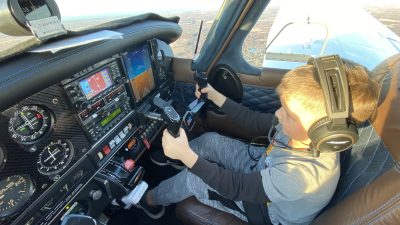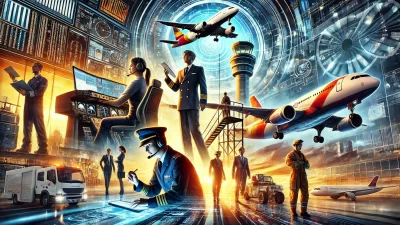Commercial airline pilots often spark curiosity, admiration, and perhaps a touch of envy. They jet around the globe, command high-tech aircraft, and carry immense responsibility every time they take to the skies. But beyond the crisp uniforms and confident cockpit announcements, pilots have a world of unique experiences and quirks. Here are ten fun and fascinating facts about these masters of the sky!
1. They Speak Their Own Language
Pilots and air traffic controllers communicate using a specialized aviation language. Phrases like “Wilco” (short for “will comply”) and the phonetic alphabet (Alpha, Bravo, Charlie) are essential for clarity and safety, especially when navigating crowded airspace or handling emergencies. Even routine phrases like “Roger” have precise meanings, making the cockpit sound like a different world to outsiders.
2. They Never Eat the Same Meal
Ever wonder what pilots eat during a flight? Airline policy often requires the captain and first officer to eat different meals to prevent both from getting food poisoning. It’s not just a superstition—it’s a practical safety measure. So if one meal goes south, the other pilot can still safely fly the plane.
3. Pilots Don’t Just Fly One Aircraft
While pilots specialize in a specific aircraft type, they don’t stick to one particular plane. For example, a Boeing 737 pilot could fly any 737 in the airline’s fleet. However, switching between aircraft types—say, from an Airbus A320 to a Boeing 787—requires additional training and certification, as each model has unique systems and handling characteristics.
4. They Have to Stay Current—Constantly
Pilots don’t just get their license and call it a day. Staying “current” requires regular simulator training, recurrent checks, and practicing emergency scenarios. Every six months, pilots undergo rigorous evaluations to ensure they’re sharp and prepared to handle the unexpected. Think of it as a driver’s test—on steroids.
5. They’re Masters of Jet Lag
Jet lag is a real challenge for long-haul pilots, but they’ve mastered the art of managing sleep schedules and adjusting to new time zones. Some carry apps or guides to calculate the best times to sleep or eat, while others rely on experience to beat fatigue. A well-timed nap in the cockpit (when allowed!) can make all the difference. Yes, controlled rest is a thing, and it’s strictly monitored for safety.
6. They Don’t Always Have Autopilot On
Contrary to popular belief, autopilot doesn’t handle the entire flight. Pilots manually control the aircraft during critical phases like takeoff and landing. Autopilot is mainly used for cruising or when managing complex navigation. Even then, pilots monitor every system and are ready to take over instantly if something doesn’t look right.
7. They Often Start Small
Many airline pilots began their careers flying small planes for regional airlines, flight schools, or cargo operations. It’s rare to jump straight into a commercial jetliner without climbing the ranks. Pilots gain valuable experience flying in diverse weather conditions and handling smaller aircraft before moving up to the big leagues.
8. They Have a Retirement Deadline
Unlike most careers, airline pilots have a mandatory retirement age of 65, set by international aviation regulations. While this rule ensures safety, many pilots find it bittersweet to leave the cockpit. Some continue flying recreationally or work in training, mentoring the next generation of aviators.
9. They Spend a Lot of Time Studying
The learning never stops for pilots. From staying updated on weather patterns to memorizing new airspace regulations or mastering new aircraft systems, pilots are always hitting the books—or the iPad. The best pilots embrace the challenge of lifelong learning, as aviation is an ever-evolving field.
10. They Have a Deep Respect for the Sky
Flying isn’t just a job for most pilots; it’s a passion. Despite the long hours, jet lag, and occasional turbulence, many pilots describe their career as the ultimate dream. Watching sunrises at 35,000 feet, skimming over endless clouds, and landing in new destinations never gets old. Pilots don’t just transport passengers—they share a profound connection with the art of flying.
Commercial airline pilots are some of the most skilled professionals you’ll ever meet, balancing technical expertise, quick decision-making, and a genuine love for the skies. The next time you board a flight, remember there’s a lot more to your pilots than meets the eye. Behind those aviator sunglasses is a person dedicated to keeping your journey safe, smooth, and maybe even a little magical.
Got a question about pilot life? Drop it in the comments! We’d love to hear from you. Safe travels!



